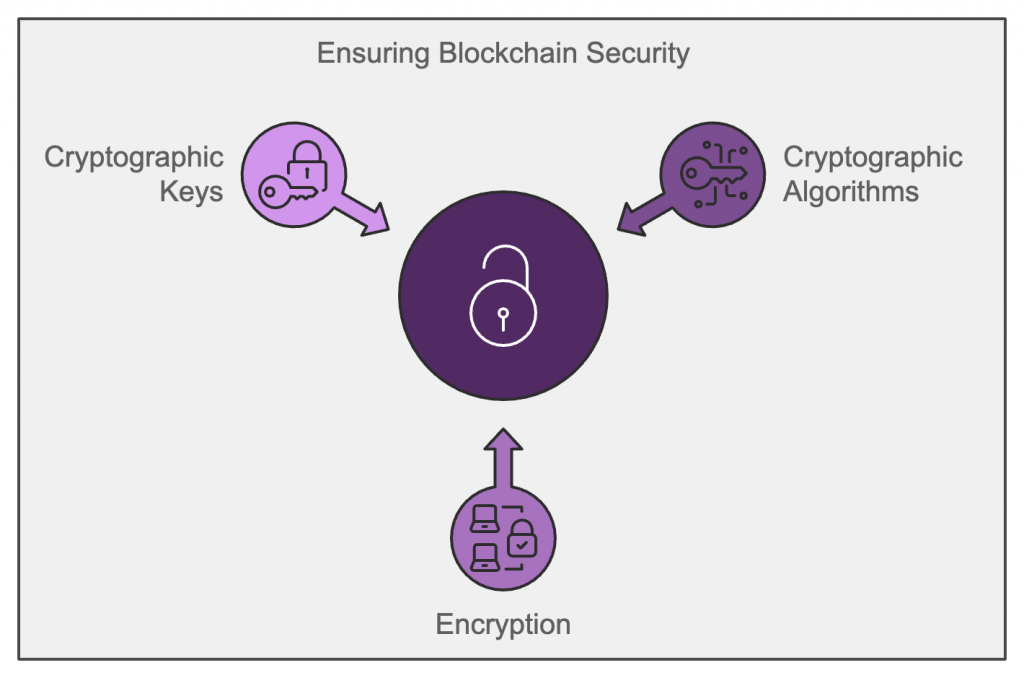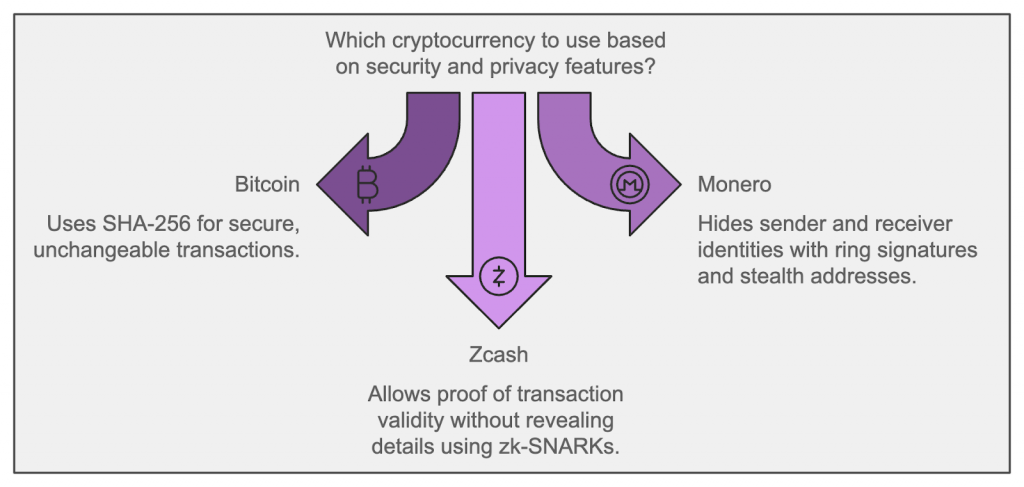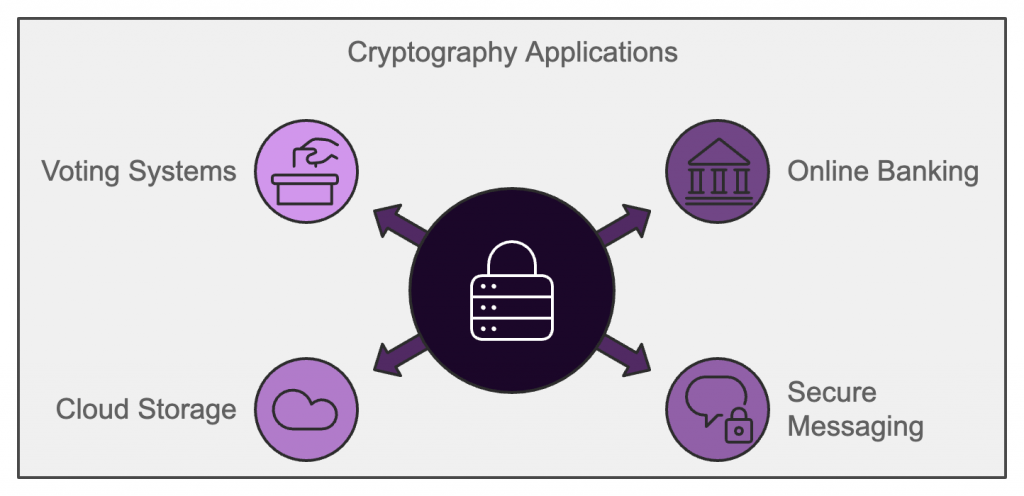The Importance of Cryptography in Blockchain Security
Blockchain technology is revolutionizing industries today, especially with the rise of cryptocurrencies like Bitcoin and Ethereum. But how do these decentralized systems stay secure without a central authority? The answer lies in cryptography – the secret sauce behind blockchain’s security, transparency, and immutability.
Imagine a world where your financial transactions, contracts, and identity can be stolen unexpectedly. Scary, right? Cryptography ensures that this doesn’t happen by protecting our digital lives. Whether sending Bitcoin to a friend or verifying a smart contract, cryptography keeps everything safe and sound behind the scenes.
In this article, we’ll shed light on how cryptography works within blockchain networks, why it’s so important, and how it will continue to shape the future of digital security. So, let’s dive into the fascinating world of cryptography and blockchain!
What Exactly Is Cryptography?
Cryptography, in its simplest form, is like a secret code that keeps information safe from prying eyes. It’s been around for ages – from Caesar’s cipher, where letters of the alphabet were shifted to create coded messages, to the ultra-complex algorithms we use today. But modern cryptography isn’t just about hiding messages anymore; it’s about securing digital transactions, communications, and identities.
In blockchain, cryptography ensures that only authorized parties can access or alter the data. Think of it like a digital lock and key: the data is locked up (encrypted), and only those with the right key (a cryptographic key) can unlock (decrypt) it. This process helps ensure privacy, data integrity, and trust in blockchain systems.

Core Principles of Cryptography in Blockchain
Hey, let’s unpack how crypto makes blockchain secure:
- Confidentiality. It’s like your private Instagram account. Only authorized users access your sensitive info. In blockchain, your private keys stay hidden from prying eyes.
- Integrity. This is all about keeping your data legit. Blockchain uses cryptographic hashing to spot any changes. It’s like having a digital guard dog that ensures your transaction data stays untouched.
- Authentication. Think of it as your digital ID check. Blockchain uses digital signatures to verify that you’re really you when making transactions. So, you won’t have to worry about someone pretending to be you or pulling a fast one.
Combine these principles, and you have a system where your data is trustworthy, and transactions go down without any sketchy business. That’s how the blockchain keeps things secure and on the same level!
How Cryptography Secures Blockchain Transactions
Cryptography is the backbone of the blockchain’s security. Here’s how it works. When you send a cryptocurrency, your private key creates a digital signature. This signature is unique and proves the transaction came from you. Anyone can verify it with your public key, but only you can make that signature. This stops others from impersonating you or altering your transaction.

Another crucial tool is cryptographic hashing. It turns each transaction into a unique string of characters (a “hash”). The hash thoroughly changes if anything in the transaction changes, even a bit. This makes it easy to spot any tampering. These hashes are then linked in blocks, forming a chain – where we get “blockchain.” This system makes sure your transactions stay secure and unchanged. It’s a smart way to keep digital transactions safe and trustworthy.
| Cryptographic Method | Purpose | Example in Blockchain |
| Digital Signatures | Authenticates transactions | Ensures only the rightful owner can sign a transaction |
| Hashing | Ensures data integrity | Detects any unauthorized changes to transaction data |
Cryptography in Action
Let’s look at how some major cryptocurrencies use cryptography to stay safe:
These examples show how vital cryptography is in keeping blockchain and cryptocurrency secure and private. Cryptography works behind the scenes to keep everything safe, whether you’re into Bitcoin, Monero, or Zcash.

Common Attacks on Cryptographic Systems
Even though cryptography is super secure, it’s not entirely invincible. There are a few sneaky attacks hackers try to pull off. Let’s explore some common ones and see how the blockchain fights back:
- Brute Force Attacks. This is when hackers try every possible key combo until they crack the right one. But no worries! Modern cryptographic algorithms (like the ones Blockchain uses), have key spaces so huge that it would take hackers forever (like, seriously, forever) to guess the appropriate one, even with the best computers.
- Man-in-the-Middle Attacks. This one’s a classic – a hacker secretly intercepts and messes with two people’s communication. In Blockchain, though, cryptographic tools like digital signatures and public key cryptography have covered this. Even if someone grabs your data mid-transfer, they won’t be able to change it without getting caught.
- 51% Attack. This is a blockchain-specific attack. If hackers somehow control over 50% of the network’s mining power, they can mess with the blockchain ledger. Scary? Yeah. Common? Not really. Big networks like Bitcoin are so massive and distributed that pulling this off is practically impossible.
While cryptography makes it super tough for hackers to break in, the tech world is continually evolving, so it’s important to stay sharp and keep defenses strong. For now, the blockchain’s cryptographic shields are doing a solid job of keeping these attacks at bay.
Cryptography Beyond Blockchain
Cryptography isn’t just the hero behind blockchain and cryptocurrencies – it plays a giant role in securing your digital life. Whether you realize it or not, cryptography works in many ways behind the scenes. Let’s check out some cool places where it’s making a difference:
As you can see, cryptography isn’t just for blockchain nerds – keeping all our digital interactions safe is essential. Cryptography ensures your digital world is secure and trustworthy, from your bank to your favorite apps.

Real-World Use Cases
Conclusion
Cryptography and Blockchain are like two peas in a pod, totally inseparable. They’re the backbone of decentralized finance and all things digital security. Without cryptography, the Blockchain couldn’t deliver on its big promises of secure, transparent, and unchangeable transactions. It’s the secret detail keeping everything legit.
But here’s the thing – cryptography’s future in Blockchain goes beyond just cryptocurrencies. We already see it pop up in other fields, like healthcare (think secure patient records) and logistics (ensuring your packages are real and trackable). Cryptography will be right there since Blockchain expands into new areas, ensuring everything stays safe and scalable.



